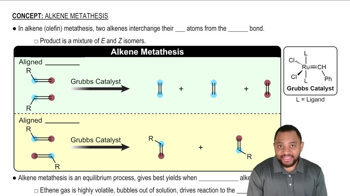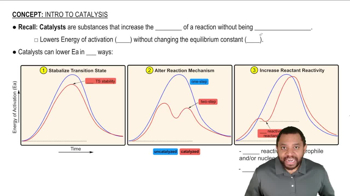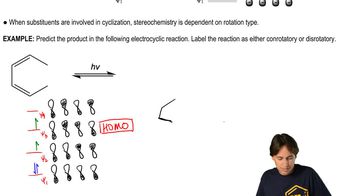Predict the products formed when CH3CH2–C≡C:–Na+ reacts with the following compounds.
a. ethyl bromide
b. tert-butyl bromide
c. formaldehyde

 Verified step by step guidance
Verified step by step guidance Verified video answer for a similar problem:
Verified video answer for a similar problem:



 5:39m
5:39mMaster Features of Addition Mechanisms. with a bite sized video explanation from Johnny
Start learning